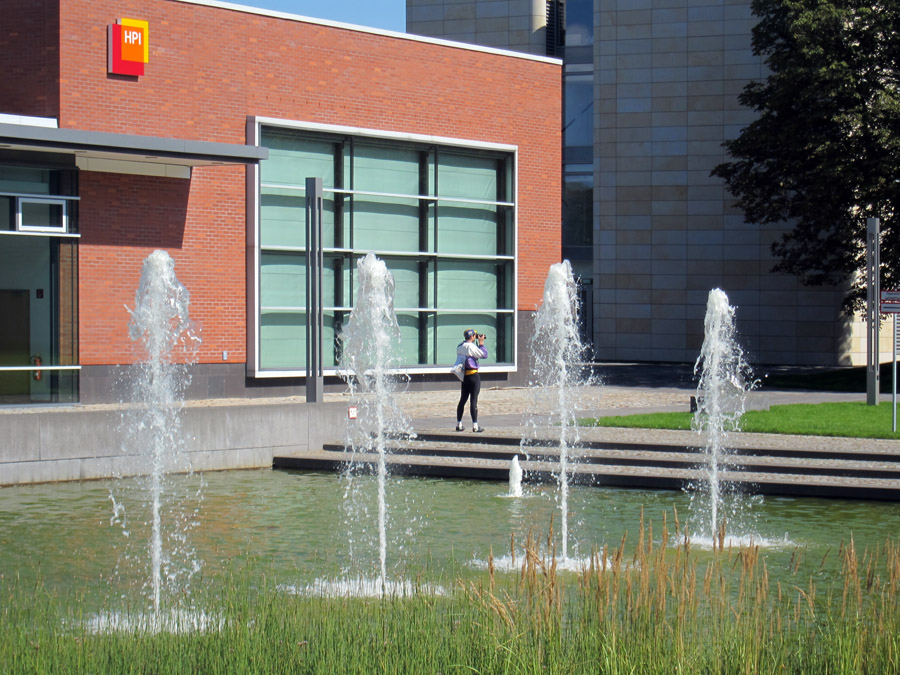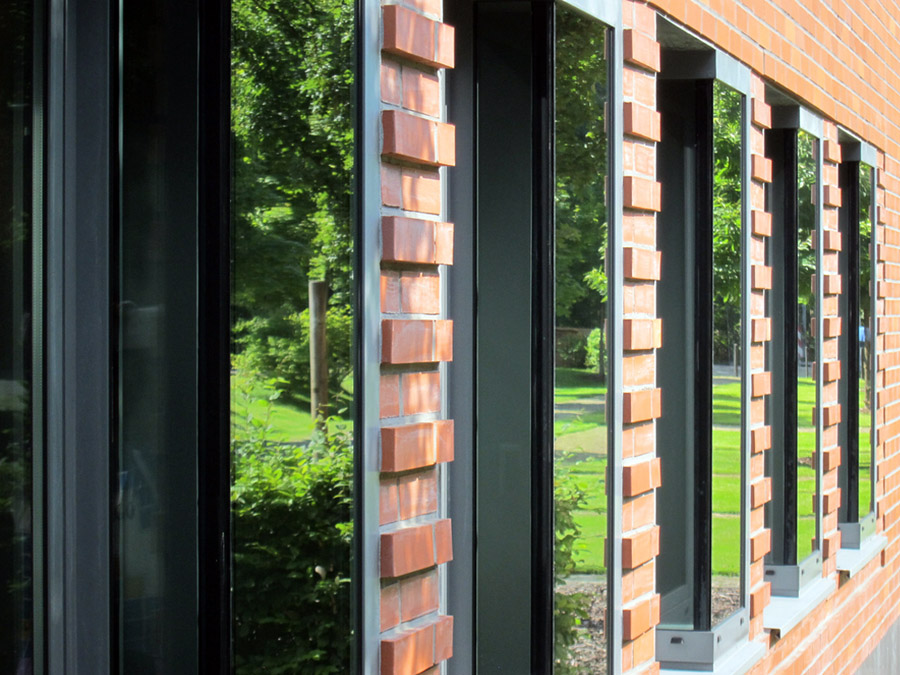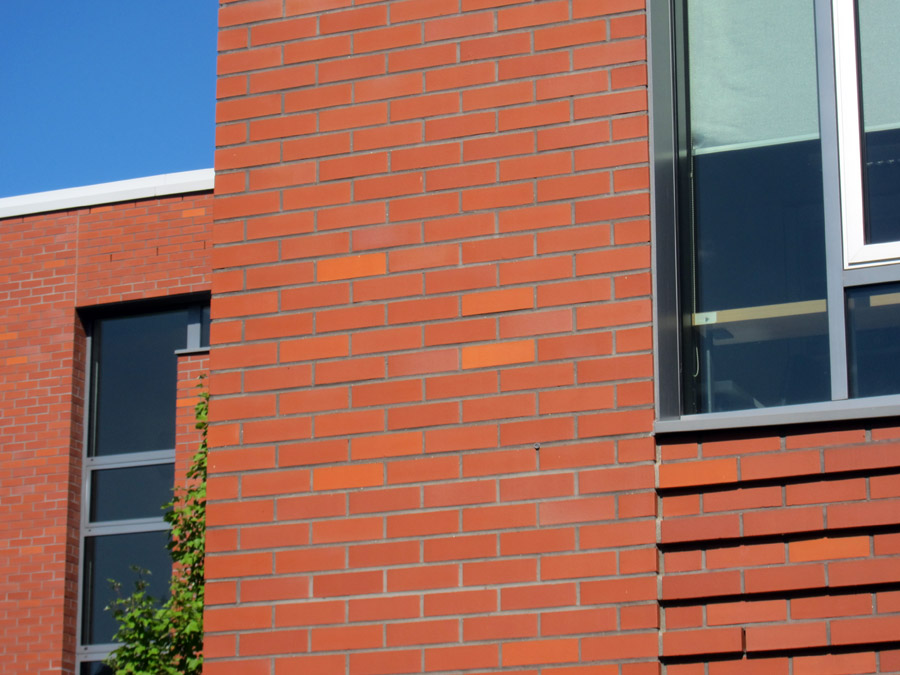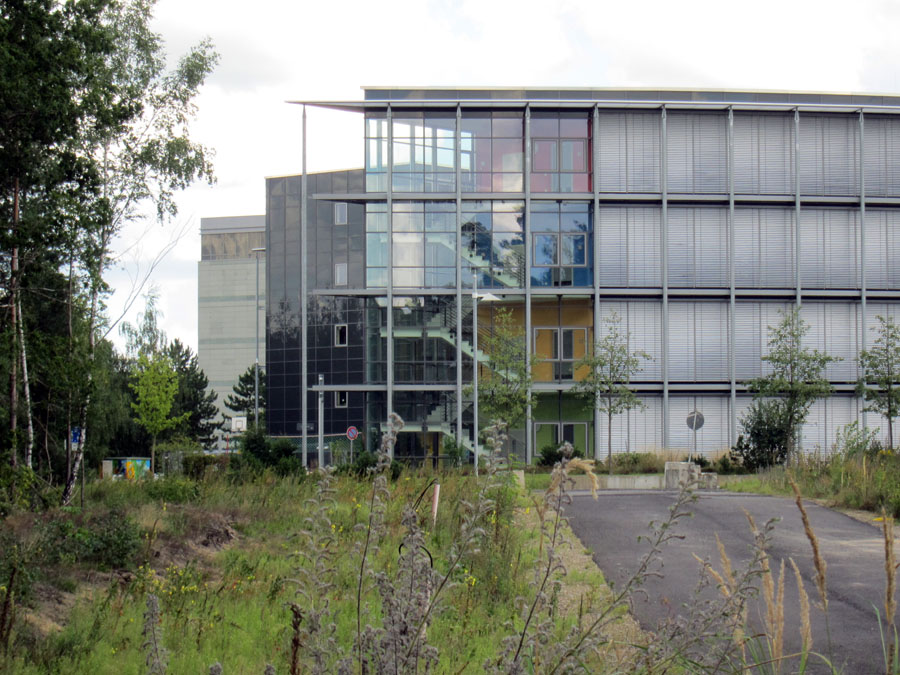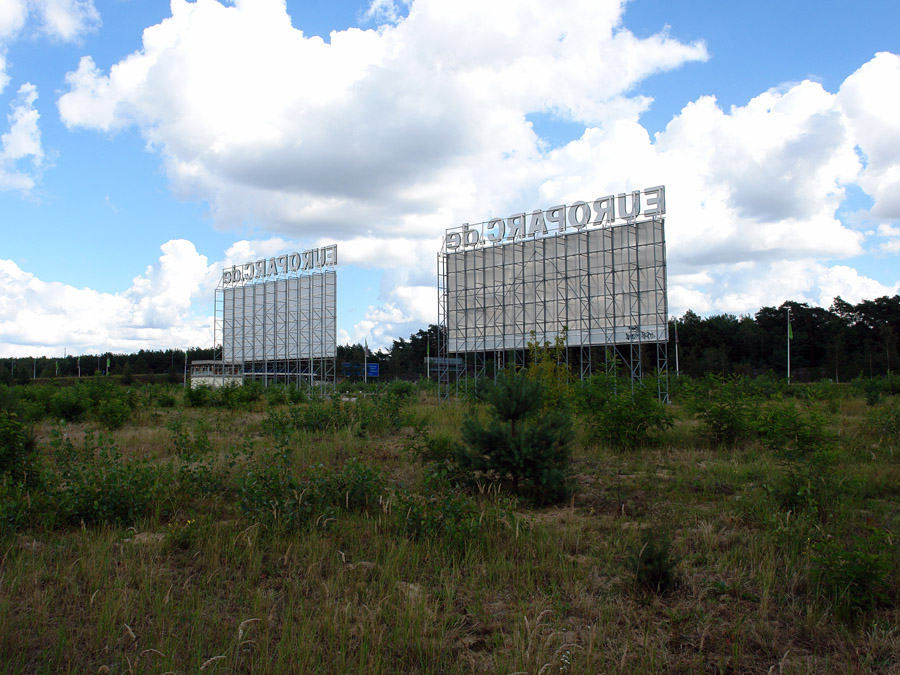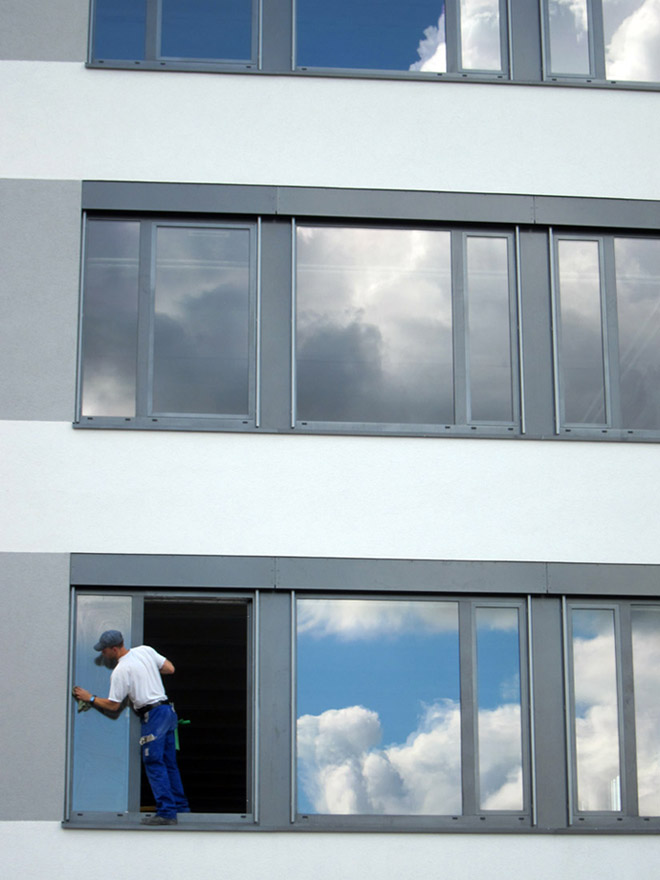New Death Strip Prequel Part 3: Floating Further out into the Cultural Vacuum
Here we present the last of three installments of Oliver Miller’s rejected text intended for our upcoming print publication, The New Death Strip. To read the previous sections, and to find out more about this, our most exhaustive project to date, please read the preceding entries from January 8th and 15th, 2011. The New Death Strip is at the printer now and should be available both in hard copy and online by the end of the week.
-Ed.
The edifice was virtually dissolving before me as I became entranced in these spectral reflections, and looking back down at the rest of the campus’s landscaping and architecture it all appeared less solid than before.
The grass struck me as uncannily thick, vibrant and uniform in color and density, the brick cladding of the other buildings at the institute had the familiar look of the scanned texture map I’d noticed back on Brunnenstrasse. Preposterous fountains spurted upwards from greenish ponds that appeared unimaginably shallow.
Everything looked clean and new and in a certain sense no less reflective than the polished glass of the new building’s curtain walls. In a world of Photoshop effects, smoothing filters, color balancing and corrected saturation, it seems there’s an irresistable drive to create a world in the image of the image.
A there-but-not-there feeling overcame me, and I spent the next hour or so wandering more or less aimlessly around Hasso Plattner Institute. The pristine artificiality of the place, its sheer made-up-ness, had put me into a space of existential contemplation. I had quite simply ceased to feel like I was anywhere anymore.
People use the metaphor of a desert to describe a place -or a state- in which you feel empty or placeless, but my childhood in New Mexico gave me a sense for the richness of life to be found there. At HPI I felt a truer form of emptiness, and now I wonder why I became so transfixed by the polished reflections of the new learning and research center. They seemed to have a cathartic effect, somehow canceling the irritation I’d felt from sustained exposure to high levels of bogusness traversing the vicissitudes of The New Death Strip . To just look away entirely, straight into the sky or towards the rail line or a group of trees outside the campus’s border, seemed like the denial of something. But by gazing into the reflections I could somehow look at the architecture without flinching. I found a way to suspend judgment on an architecture that I’d initially found to be plainly deterrent, and the act seemed to have implications for the rest of my survey in general. The NDS can be seen as a panoply of disassociated visions, each one highly specific in the minds of those who were responsible for turning them into something more real. Because it exists in a space lacking cultural legacy, anything seems possible on the NDS. But for whatever reason, whether economic, sociological, historic or psychological, there’s not much along the line of the old Wall that’s exuberant or experimental. It may just be down to the fact that it’s much easier to have a vision than to be visionary. The entire ensemble at HPI, and along the New Death Strip as a whole, is a mirage. It is the production of so many irregular conditions that float within a cultural vacuum, a cross section of refracted and disassociated allusions to the culture of its makers. Only by accident, it seems, has something taken seed there that can be seen to be legitimately either conservative or radical.
After the time spent at HPI the mirage feeling kept recurring. Following a much needed bucolic romp along the Stichkanal we came upon Europarc Dreilinden, a towering island of commercial real estate speculation built upon the former site of the largest border crossing between the old East and West, the place that was formerly Checkpoint Charlie’s lesser-known big brother, Bravo. Navigating our racing bikes over the bumpy terrain of the footpaths to its north, the back end of the some multinational HQ rose from the sandy forest like a volcano of capital from Brandenburg’s economic wastelands. It was totally covered in glass curtain walls, some shuttered a la HPI, and I immediately began trancing out on more of those puffy clouds being mirrored back to me. For a moment I looked deeper, behind the reflections, and was able to identify the building’s occupant without the need for any signage or cute logos.
The walls of the hallways had been color coded floor for floor in Ebay’s signature palette of red, blue, yellow and lime green. Beyond, two more office blocks gently imposed themselves upon the scene. The first was clad with polished black glass, the second in perfectly planed limestone tiling. If HPI were a talented pup showing industry and promise as it explores the new surroundings of its Prussian socio-cultural landscape, Europarc would be a hyperreal alpha male wolf, lurking silently but ready to pounce. The expanses of smooth façades drew my eye from one consummately ludicrous high rise to the next, until the biotope landscaping feature at the center of it all tempted me to supplant reveries born of glass and steel with the picturesque vision of their own reflections in the watery stillness of an artificial wetlands preserve. To the south, beyond the reeds and willows of the landscape feature, I saw the backwards letters of the two great “EUROPARC.de” billboards. They stood side by side above naturalistic ground cover, like twinned sentinels protecting this corporate fantasy from the forbidding threat of the A115 highway beyond.
I turned back and after a little while happened upon a cozy loop road doing its best to link up the motley cast of architectural characters that make up Europarc Dreilinden, each one the fragment of a collective dream that offers no rest. Amongst the such neighbors as the Porsche dealer, Ebay+Paypal and the Ibis hotel there stood a pristine, new, and un-demarcated building. Like the learning and research center at HPI, it was so fresh that it hadn’t been finished yet. Refuse from its construction littered the edges of a freshly asphalted parking lot, and the place felt calm as I continued to document the paths of clouds reflected in the structure’s expanses of glass.
Only a lone a window cleaner interrupted my meditations as he carefully wiped their panes clean; the mirage, I then understood, has to be diligently maintained.
